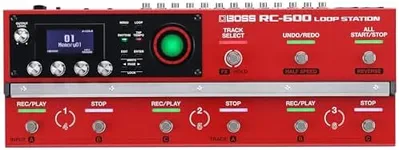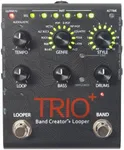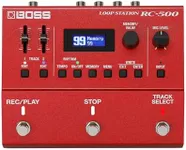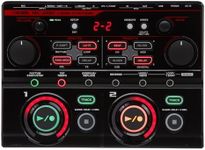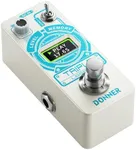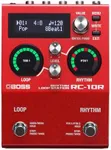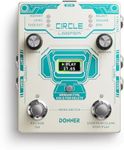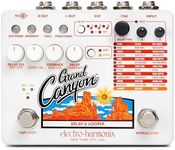Buying Guide for the Best Looper Pedals
Choosing a looper pedal can be a fun and creative process, as these devices let you record and layer sounds in real time, opening up new possibilities for practice, songwriting, and live performance. The right looper pedal for you depends on how you plan to use it—whether you want something simple for solo practice or a more advanced tool for complex live looping. Understanding the main features and how they relate to your needs will help you make a smart choice.Loop Time (Recording Length)Loop time refers to how much audio the pedal can record in a single loop. This is important because it determines how long your musical phrases can be before the loop repeats. Shorter loop times (under 1 minute) are fine for simple riffs or practice, while longer loop times (several minutes or more) are better for building complex arrangements or full songs. If you want to layer multiple sections or perform live, look for a pedal with longer loop time.
Number of Tracks (or Loops)Some looper pedals allow you to record and play back multiple independent loops or tracks at once. This is useful if you want to build up different song sections or switch between parts during a performance. Basic pedals usually offer just one track, which is enough for simple looping, while more advanced models can have two or more tracks for greater flexibility. If you plan to create multi-part arrangements, consider a pedal with multiple tracks.
Undo/Redo FunctionThe undo/redo function lets you remove or restore the last layer you recorded. This is helpful if you make a mistake or want to experiment with adding and removing parts. Not all pedals have this feature, so if you like to experiment or want the freedom to fix errors on the fly, look for a pedal that offers undo/redo.
Footswitches and ControlsLooper pedals come with different numbers and types of footswitches and controls. More footswitches can make it easier to start, stop, overdub, and switch between loops without bending down or using your hands. Simple pedals may have just one switch, which is fine for basic looping, while more complex pedals have multiple switches for more control. Think about how much control you want with your feet, especially if you plan to use the pedal live.
Storage and MemorySome looper pedals can save your loops even after you turn them off, while others lose everything when powered down. If you want to save your ideas, practice sessions, or performances, look for a pedal with built-in memory or the ability to use external storage like SD cards or USB. This is especially useful for songwriters or performers who want to prepare loops in advance.
Audio QualityAudio quality is measured in terms of bit depth and sample rate, which affect how clear and accurate your loops sound. Higher values mean better sound, but even basic pedals usually offer good enough quality for practice. If you’re recording or performing professionally, look for higher audio quality specs, but for home use, standard quality is usually sufficient.
Inputs and OutputsThe types and number of inputs and outputs determine what instruments and devices you can connect. Some pedals have just a single input for guitar, while others offer stereo inputs, microphone inputs, or even MIDI connections. If you want to loop vocals, keyboards, or multiple instruments, make sure the pedal has the right connections for your setup.

